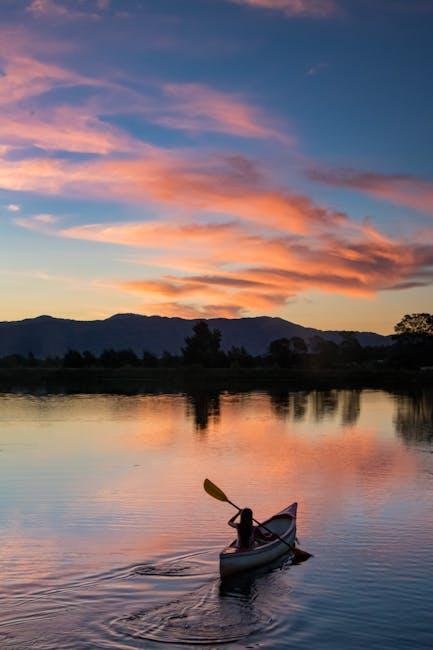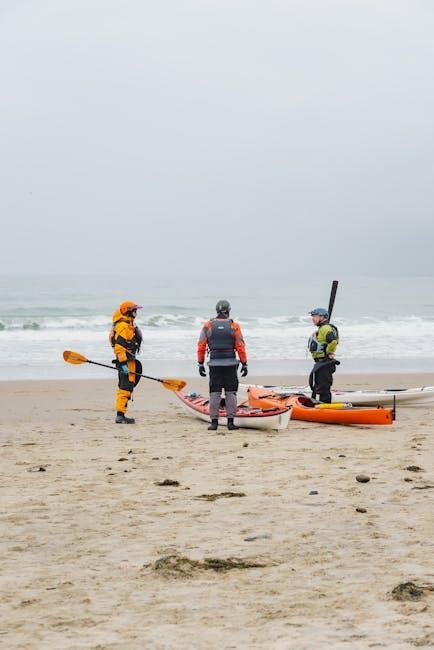Title: Kayaking Terms Every Beginner Should Learn: Navigating the Waters of Vocabulary
As you dip your paddle into the shimmering surface of a lake or glide through the gentle currents of a river, the world of kayaking unfolds before you. While the thrill of exploration and the serenity of nature may draw you to the sport, understanding the language of kayaking is essential for enhancing your experience on the water. Just as a sailor must know their knots and a mountaineer their gear,every beginner kayaker should become familiar with the terminology that enhances safety,communication,and enjoyment on their aquatic adventures. In this article, we’ll dive into the essential kayaking terms that will empower you to paddle with confidence, ensuring you not only navigate the waterways effectively but also connect with your fellow kayakers.Whether you’re planning your first outing or dreaming of conquering new rapids, mastering these terms will set you on the right course. Let’s get started!
Understanding the Basics of Kayaking Terminology
Before you embark on your kayaking journey, it’s essential to familiarize yourself with the language that surrounds the sport. Understanding basic kayaking terminology can greatly enhance your experience on the water and ensure a safe adventure. Key terms include:
- Cockpit: The opening where you sit in the kayak.
- Deck: The upper part of the kayak that covers the hull.
- Hull: The bottom part of the kayak that makes contact with the water.
- Paddle: The tool used to propel the kayak forward.
- Stroke: The action of pushing the paddle through the water.
Beyond the basics, there are also more specialized terms that can improve your kayaking knowledge. When you’re ready to delve deeper,consider familiarizing yourself with the following concepts:
| Term | Definition |
|---|---|
| Edging | The technique of tilting the kayak to improve maneuverability. |
| sculling | A paddling technique used to keep the kayak stable. |
| Portage | Carries the kayak over land between two bodies of water. |
| Tracking | How straight your kayak moves in the water. |

Essential Paddling Terms for New Enthusiasts
Kayaking can be an exhilarating experience, but to truly enjoy the journey, it’s essential to familiarize yourself with some key terminology.Understanding basic navigation terms can enhance your paddling experience and ensure safety. Here are a few important terms to get you started:
- Paddle Float: A device used for stability when re-entering a kayak from the water.
- Edging: The technique of tilting your kayak to improve turning and control.
- Bow: The front part of the kayak.
- Stern: The back part of the kayak.
- Hull: The main body of the kayak, which affects its stability and speed.
Another area to consider is water-related terminology that refers to conditions you may encounter. Being able to communicate about these factors can be invaluable on your adventures:
| Term | Definition |
|---|---|
| Current | The flow of water in a river or stream. |
| Chop | Small waves caused by wind or currents. |
| Crosswind | Wind that blows across your path, affecting navigation. |
| Swells | Larger, rolling waves that can impact paddling conditions. |

Navigating Safety vocabulary in Kayaking
Understanding the terminology related to safety is crucial for any novice kayaker. Grasping these words not only enhances communication among paddlers but also fosters a safer environment on the water.Some fundamental safety terms to familiarize yourself with include:
- PFD (Personal Flotation Device): Essential for buoyancy and legal requirements.
- Swamping: When water enters your kayak, increasing the risk of capsizing.
- T-rescue: A technique for rescuing a capsized kayaker that involves creating a “T” shape with the kayaks.
- Strainer: A hazard that allows water to flow through but catches objects, including people.
- Current: The movement of water which can affect navigation and safety.
To effectively navigate these terms, creating a quick reference chart can be invaluable. Here’s a simple visualization to help reinforce your understanding:
| Term | Definition |
|---|---|
| PFD | Personal flotation device worn while kayaking. |
| Capsize | When a kayak rolls over in the water. |
| Edging | Leaning the kayak to improve handling and stability. |
| Scout | Assessing the water conditions and hazards before paddling. |

Gear and Equipment Lingo Every Beginner Should Know
As you embark on your kayaking journey, familiarizing yourself with common gear and equipment terminology will enhance your experience on the water. Here are a few essentials that every beginner should know:
- Paddle: The tool used to propel your kayak. Paddles come in various styles and materials, impacting weight and efficiency.
- Personal Flotation Device (PFD): Also known as a life jacket, this safety gear is a must-have for every kayaker.
- Deck line: A cord attached to the perimeter of the kayak, used for securing gear and for safety in emergencies.
- Skeg: A retractable fin on the bottom of some kayaks that helps maintain directional stability.
- Spray skirt: A waterproof cover that fits around the cockpit, keeping water out and the paddler dry.
Understanding these terms will not only help you communicate effectively with fellow paddlers but will also give you confidence on the water. Below is a brief overview of some additional gear components you may encounter:
| Gear | Function |
|---|---|
| Dry bags | Keep your belongings dry during kayaking trips. |
| Foot pedals | Control the rudder for navigating with greater precision. |
| Bilge pump | Used to remove water from the kayak. |
| Paddling jacket | Provides protection from the elements while paddling. |
Future Outlook
As you dip your paddle into the inviting waters of kayaking, understanding the language of this exhilarating sport becomes essential for navigating both the river’s currents and the broader kayaking community.By familiarizing yourself with these key terms, you not only enhance your safety and skills but also enrich your overall experience on the water. Every journey begins with a single stroke, and now that you’re equipped with the vocabulary of the trade, you’re ready to embark on unforgettable adventures.So, grab your kayak, embrace the thrill of the unknown, and let the waves carry you into new horizons—because each outing is a chance to learn, grow, and immerse yourself in the beauty of nature. Happy paddling!
